Wetlands: A Priority for Bird Conservation
Colorado’s water-related problems are increasingly complex. In the S. Platte Basin (the Basin), a diverse and growing population—combined with a booming economy—are creating enormous challenges in meeting water needs. The region includes the Denver Metro area and several other growing communities (such as Boulder, Loveland, Greeley and Fort Collins). The region accounts for over half of the state’s economic activity. The Basin also contains five of the top ten agricultural producing counties in Colorado.
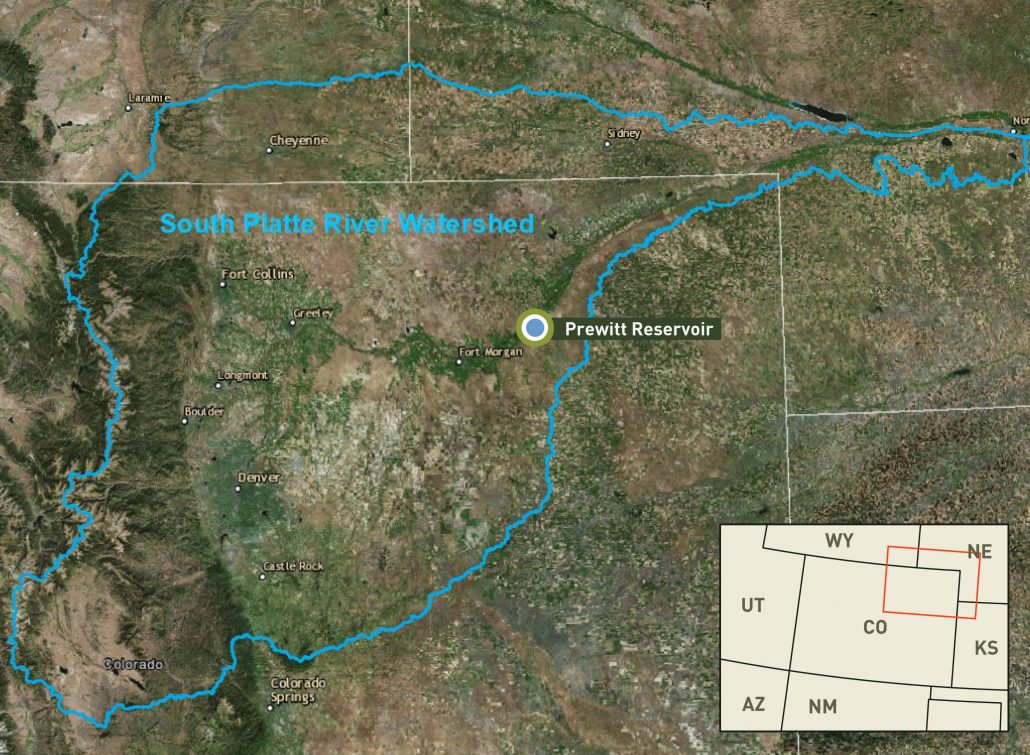
The lower S. Platte has always been an important migratory stopover and wintering destination for waterfowl. However, midwinter duck counts coordinated by Colorado Parks and Wildlife (CPW) have shown a decline in lower S. Platte duck numbers starting in the early 1980s. Recoveries recently seen in other parts of the country haven’t occurred here. This is likely due to water and land use changes that have led to habitat loss within the Basin.
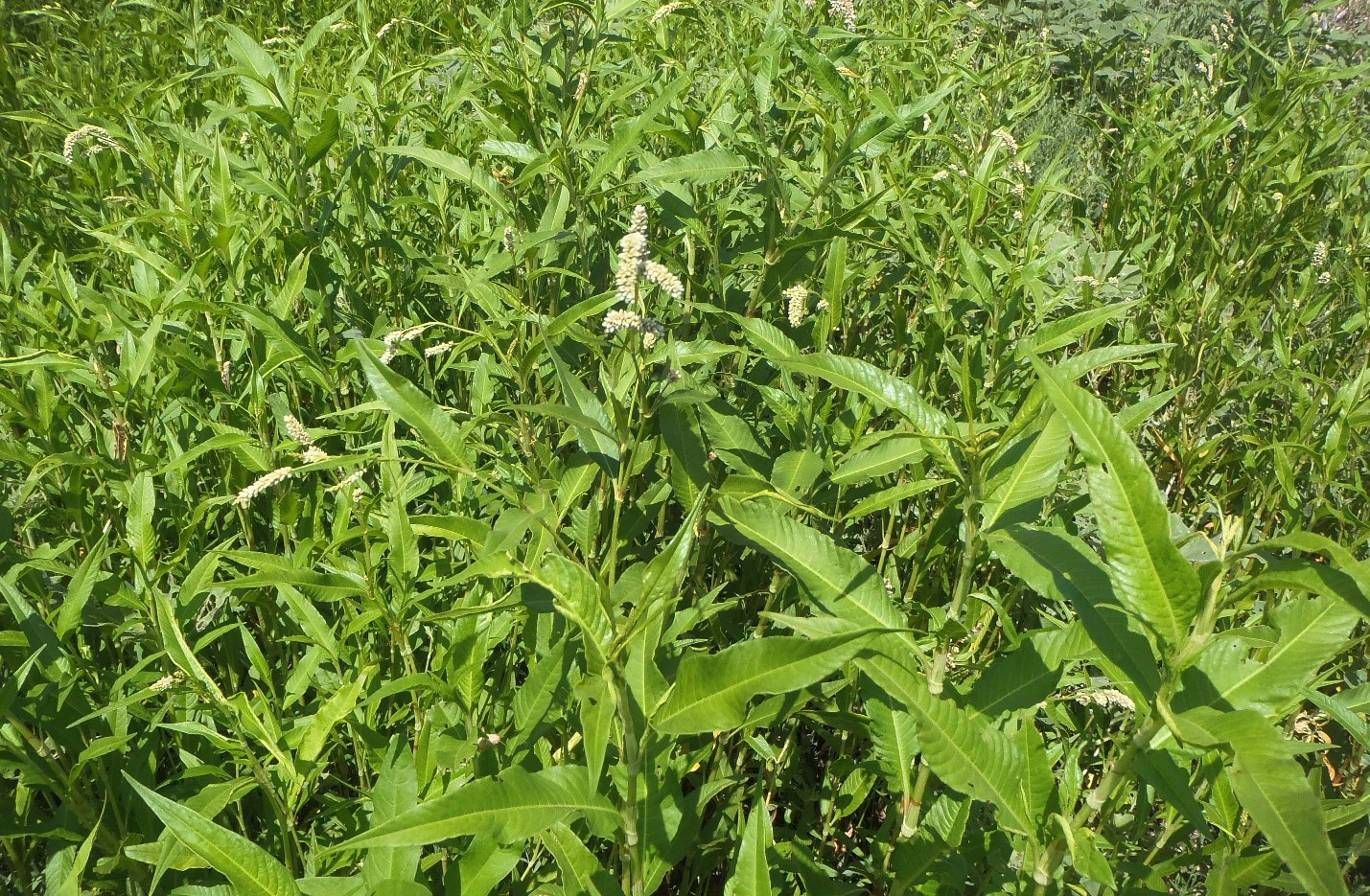
Before modern water management practices, the South Platte River was historically a mile wide and an inch deep. The seasonal flood plain was likely covered in moist soil plants like beggarsticks, millets and smartweed (pictured above). Nutrient-rich, this plant provides fats, minerals and vitamins while also creating habitat for invertebrates—a source of protein for birds. Photo by Colin Lee.
Colorado’s State Wildlife Action Plan states one of the highest priority actions for species of greatest conservation need is the management and restoration of habitats and ecological processes. To help accomplish this in the Basin, land managers are creating smaller moist soil units—wetlands with higher densities of vegetative cover and invertebrates. These wetlands provide large amounts of highly nutritious forage for waterfowl, shorebirds, and other species and mimic what used to be on the landscape.
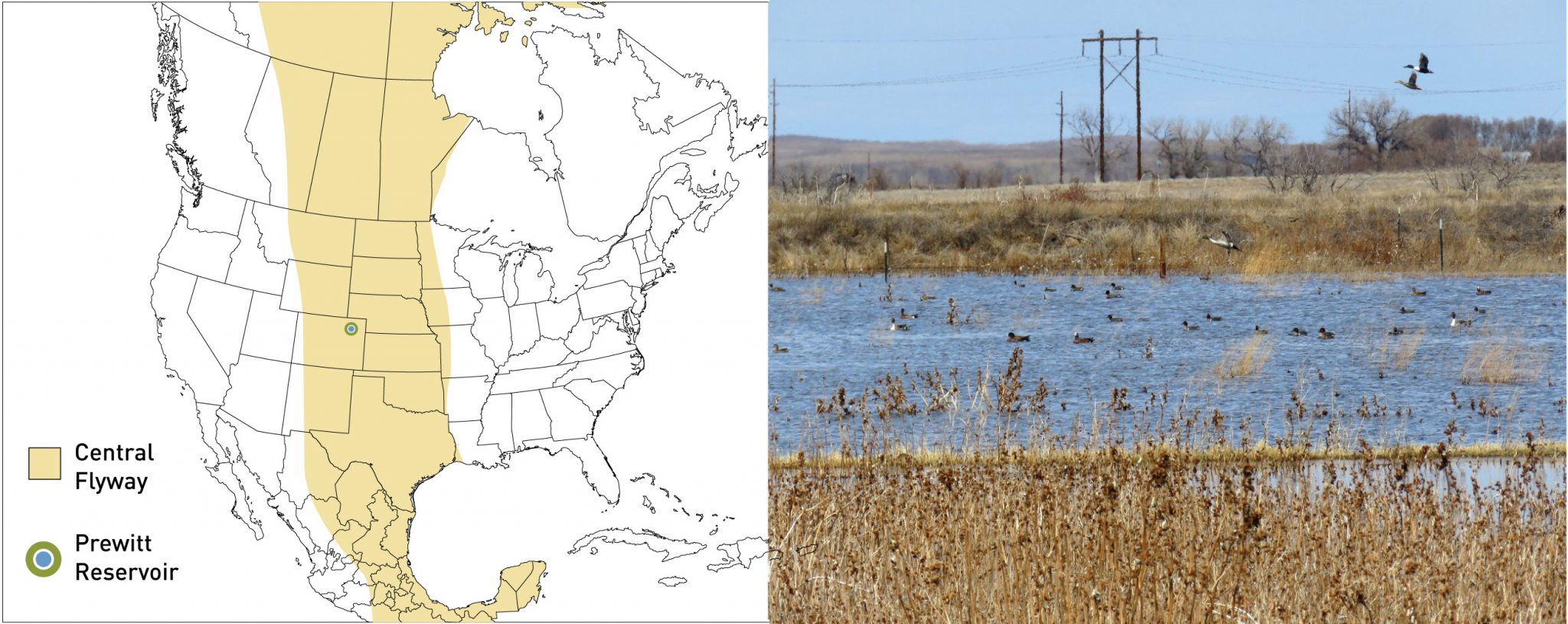
Wetlands like those at Prewitt Ranch/Reservoir attract mass numbers of migratory and resident birds along the Central Flyway.
Empowering Wetland Conservation on Private Lands
Private land makes up over 80% of the land within eight miles of the S. Platte River corridor, making it essential that private landowners are involved in the conservation of this precious resource. One approach for achieving moist soil management and riparian conservation has been to enroll private lands in easements such as the Wetlands Reserve Program (WRP) with the USDA Natural Resources Conservation Service (NRCS). WRP is a voluntary program that provides technical and financial assistance to eligible landowners to restore, enhance and protect wetlands on their property. In a landscape where continual expansion of development is occurring, conservation initiatives like this build knowledge. Indirectly, they also help ensure future generations are able to live and work on the land by building resilience and improving productivity.
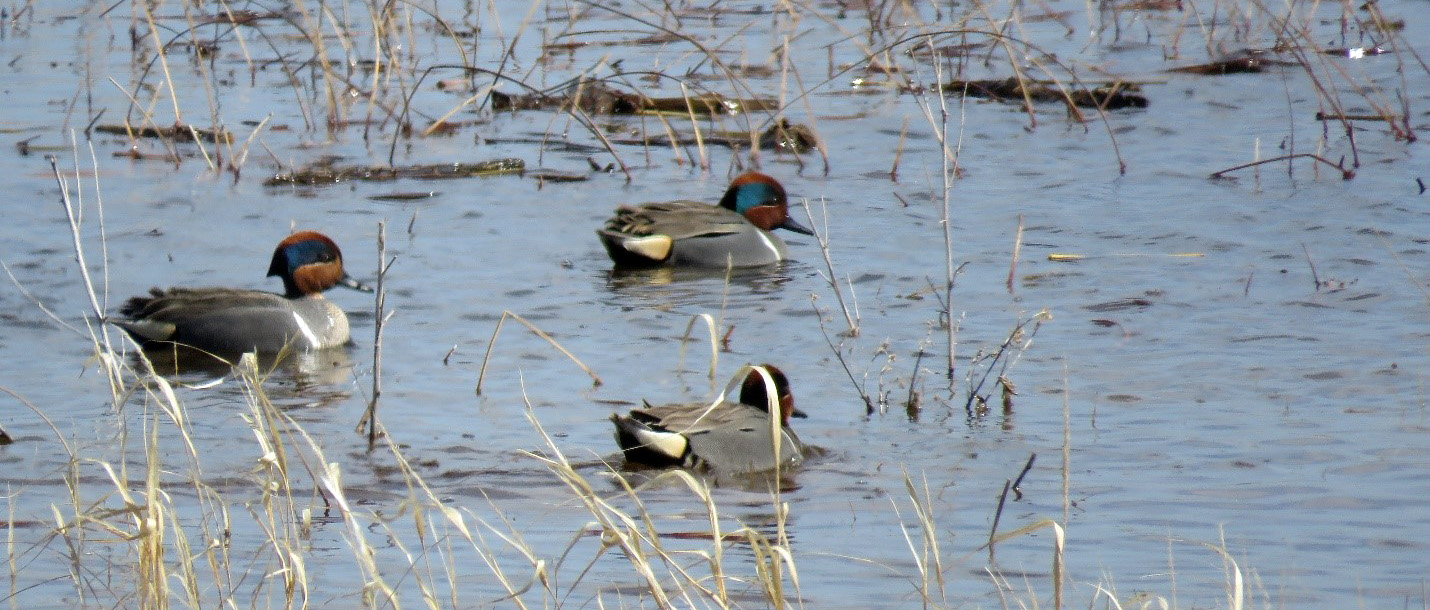
Green Winged Teal foraging in the shallow water of Pond 2. Photo by Kelsea Holloway.
For the most part, successful WRP management requires diligent landowners to participate in providing quality habitat. Where there is a lack of necessary maintenance and management, technical assistance provided by resource professionals is usually sufficient to accomplish basic needs. Increasingly, however, landowners are elderly, live outside the area or not able to implement management practices due to economic reasons and cannot easily conduct management activities.
There are over 50 WRP easements along the lower S. Platte River that provide valuable wetland habitat that are in need of regular management actions and periodic maintenance. Many of these properties have degraded structures that need repair for which costs are considerable. However, several conservation groups, including Bird Conservancy, are committed to work together to leverage financial and technical resources to accomplish this.
Our Stewardship Program employs Wetland Biologist, Kelsea Holloway, who works out of the Greeley NRCS office where she engages with private landowners along the S. Platte River that hold WRP easements. We have several high-priority WRP properties identified as needing of financial assistance to repair degrading structures and enhance existing wetlands. The NRCS is capable of assisting with some of these necessary repairs, but lack of funds stalls progress on many of the WRPs. To bridge those gaps, we’re engaging a wider array of partners and sponsors.
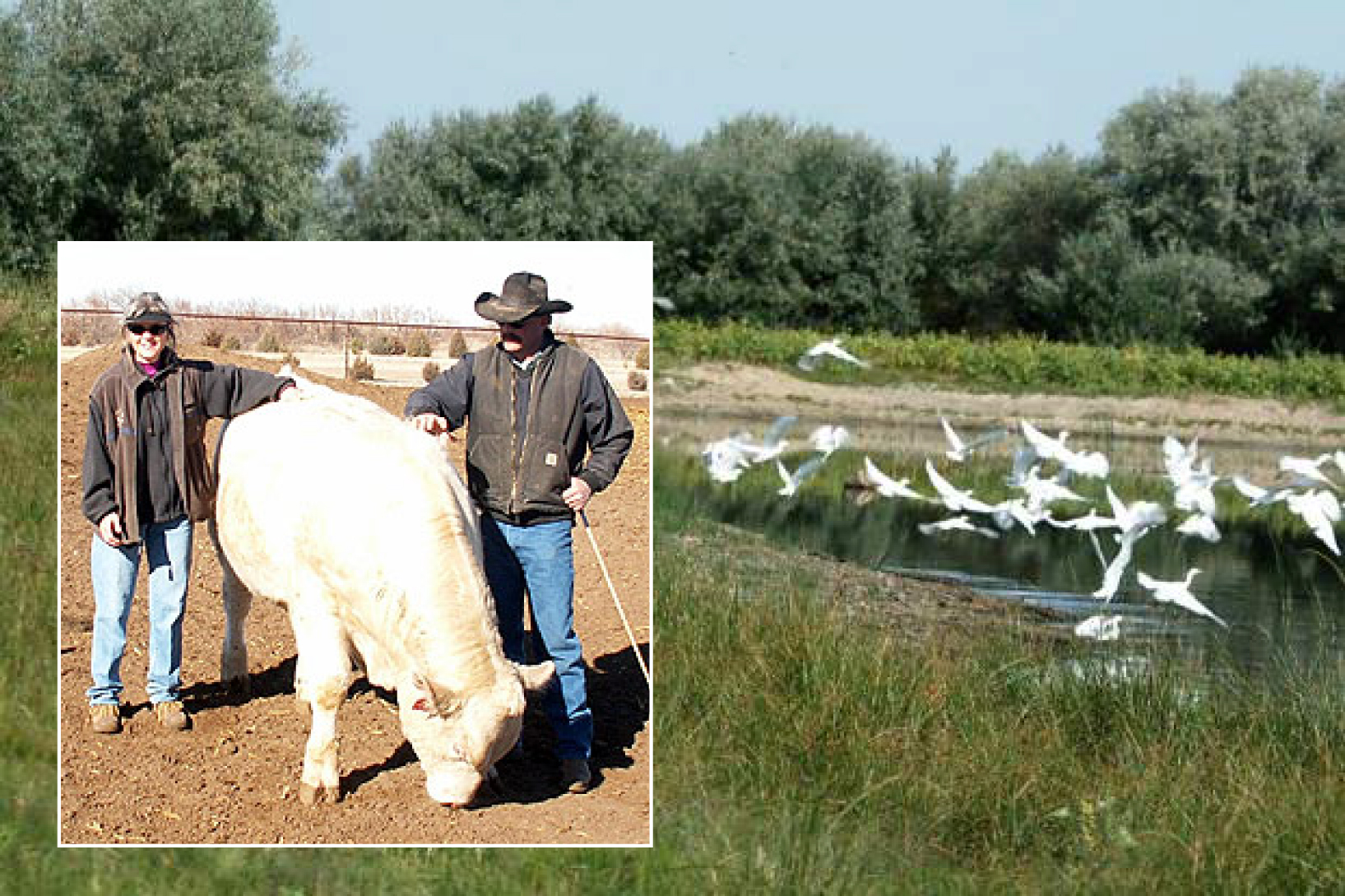
Luan August and Pat Gebauer raise registered Cardinal Charolais cattle. They received the 2014 Conservationist of the Year award from the Colorado Association of Conservation Districts for their efforts demonstrating that ranching and wildlife can flourish together. Photos by Cardinal Charolais and the Fence Post.
Case Study: Prewitt Ranch Agridrain Installations
The Cardinal Charolais at Prewitt Ranch, run by Pat Gebauer and Luan August, is a good example of this. These two manage at least 4,000 acres around the south side of Prewitt Reservoir, where the Prewitt Inlet Canal and Platte Beaver Ditch run. During a flood, the ditches breached and filled with water leaving Pat with the idea to create some wetlands. Pat worked closely with NRCS to enter into a 143-acre, seven pond WRP easement with the dual objective of recharging the groundwater and providing wetland habitat. Agridrains (water control structures) installed between certain ponds help control the water levels in each. However, one pond did not include these structures and therefore was never allowed to dry. The continuous saturation led to excessive cattail cover, reducing the habitat value. Biologists and landowners determined that water control was key.
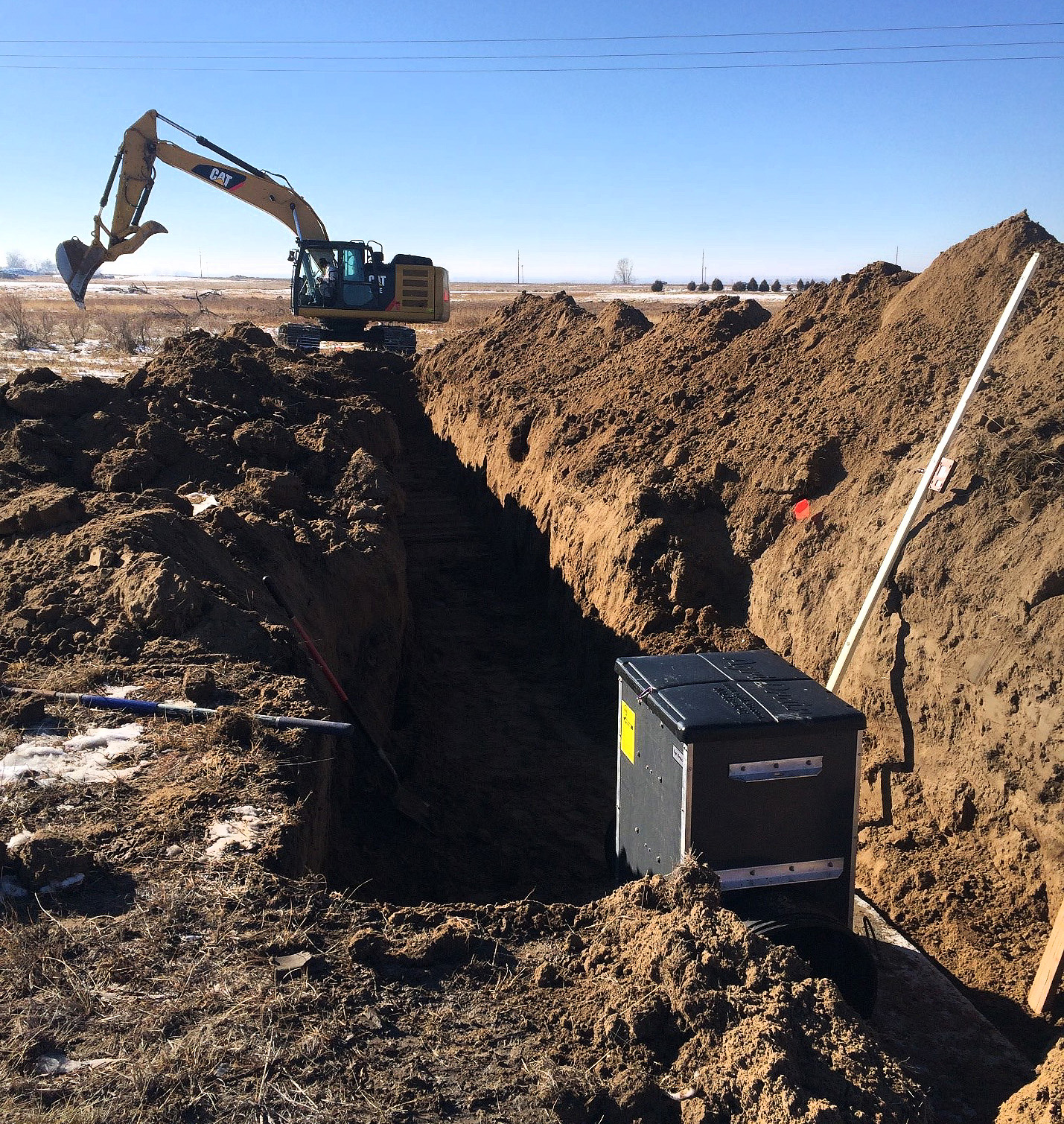
An agridrain being installed. Photo by Kelsea Holloway.
In 2017, a team consisting of a Bird Conservancy of the Rockies, NRCS, Colorado Open Lands, U.S. Partners for Fish and Wildlife (PFW) and Ducks Unlimited (DU) worked together to develop plans and gather funding to install two new agridrains on the wetland. With additional financial assistance from DU, PFW, and a new partner, Whiting Petroleum, the project was completed in February 2018 —just in time for spring flows and the first migrants to travel in to the area.
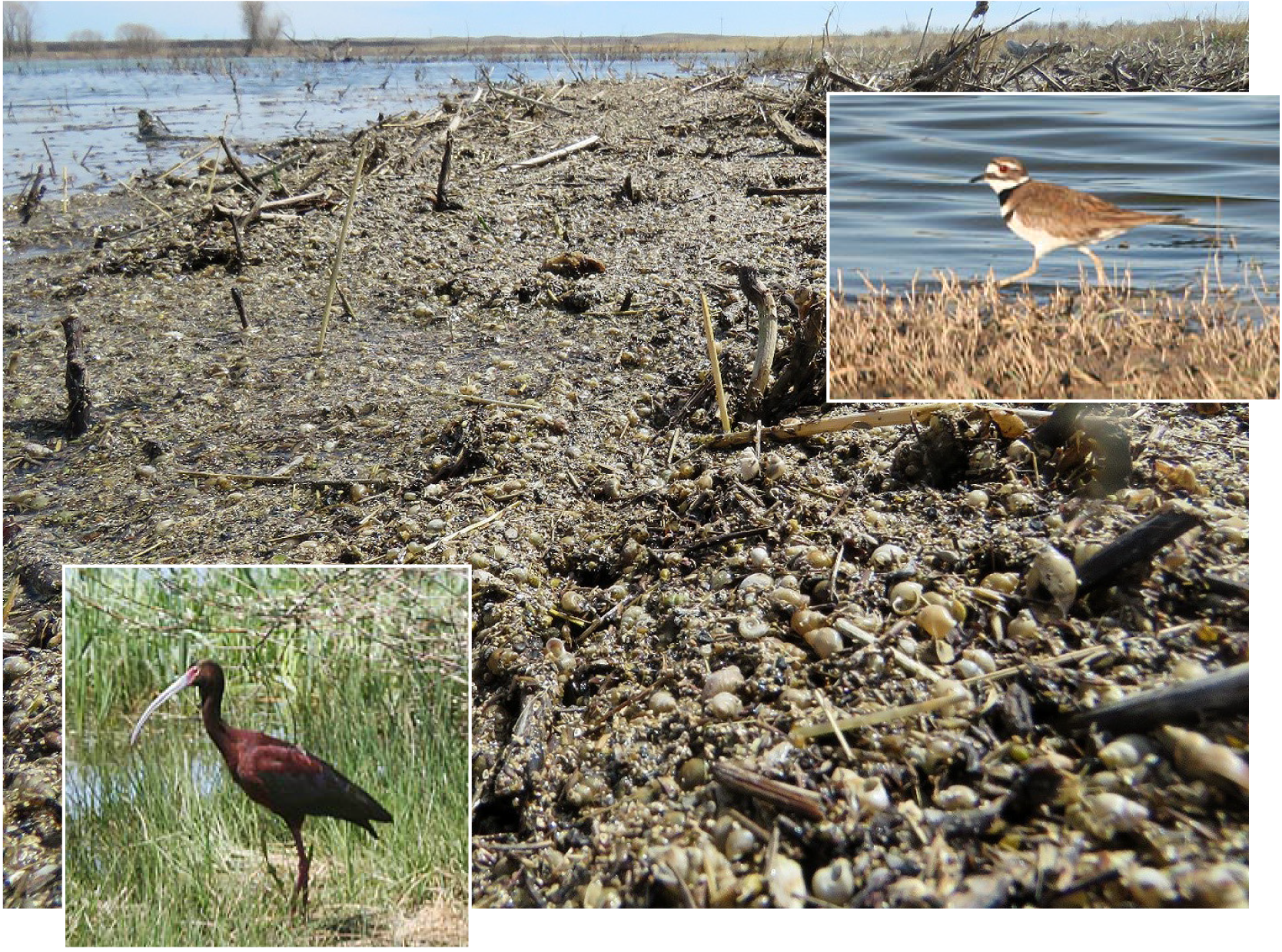
When the moist soil ponds recede during the spring, seeds and invertebrates (snails) are easily available for the dabblers and shorebirds such as White-faced Ibis and Killdeer.
Build it and they will come
The results were instantaneous! The wetland expanded from 4.5 to 14 acres. The existing grasses that were flooded provided excellent habitat for invertebrates, which attracted many foraging birds. The shallow water areas (1-2 feet) were perfect spots for dabblers, and the deeper areas were sufficient for the divers. Across the easement area, you could hear the chatter, quacking, and honking of the birds using the wetland. Each week, the species mix changes due to migratory patterns.
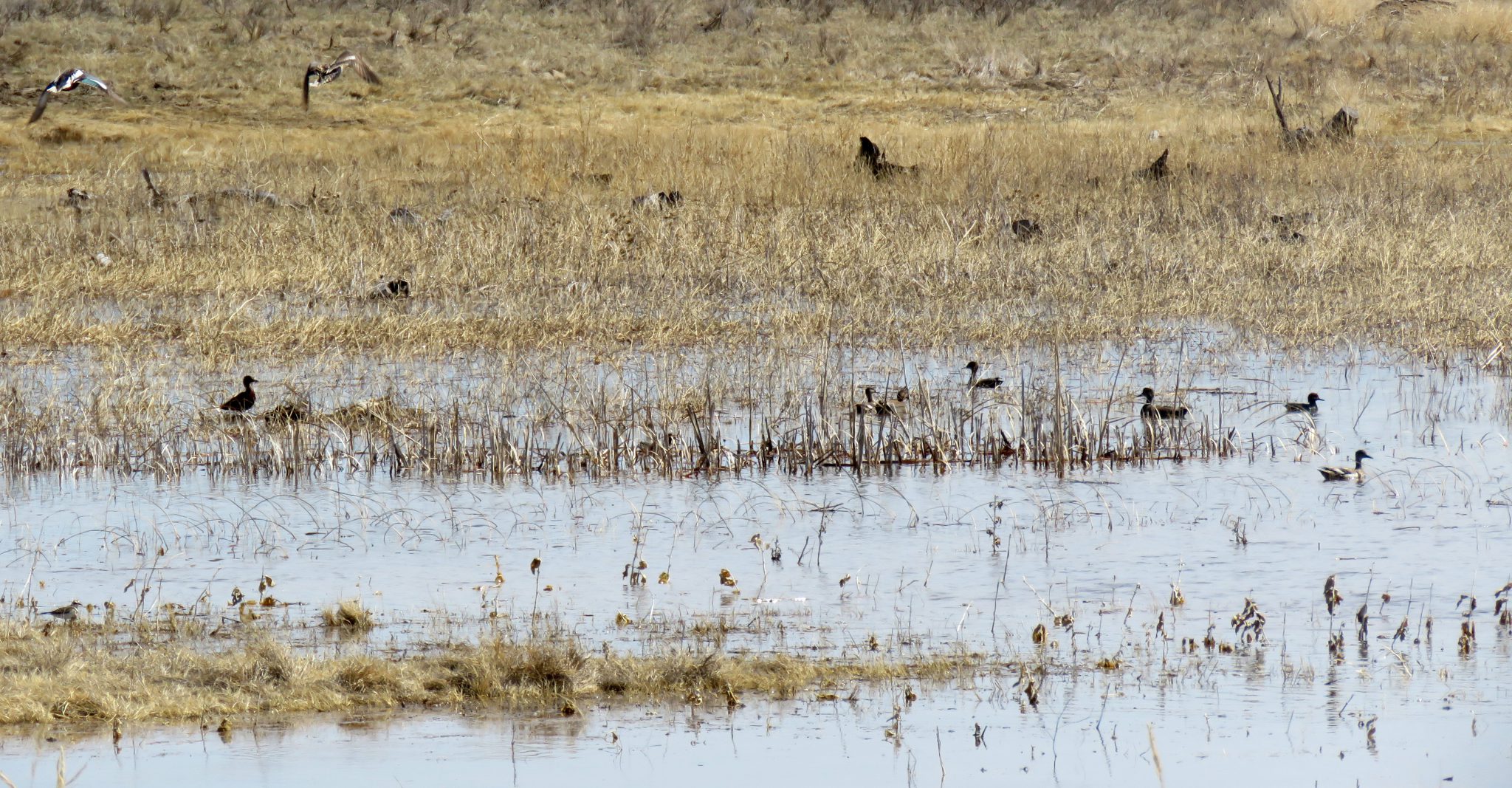
Waterfowl typically prefer 1-14 inches of water depth in wetlands. Photo by Kelsea Holloway.
These wetlands are extremely important. Birds rely on these areas for replenishing nutrients needed for migration, gaining body strength for producing young, and cover for raising their young. Wetlands also provide many other benefits like flood mitigation, erosion control, groundwater recharge, water filtering, and recreation. The partnerships that make wetland conservation possible are invaluable. Your support ensures we continue to improve the resilience and health of this fragile landscape.
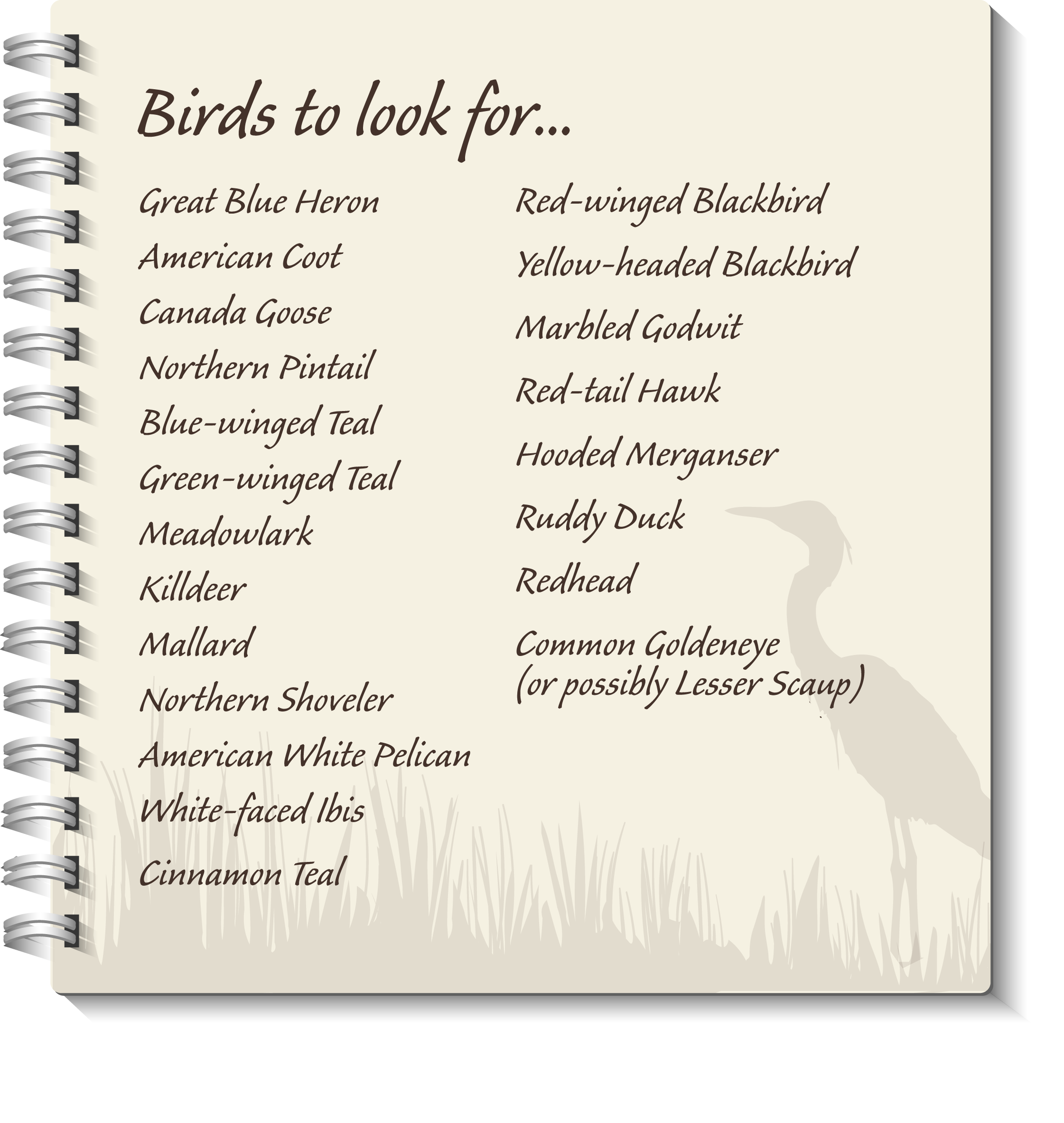 Visit Prewitt Reservoir
Visit Prewitt Reservoir
Prewitt Reservoir is a State Wildlife Area and a great place for birding. It is stop #8 on the Prairie Oases Trail on the Colorado Birding Trail. The site is home to a large blue heron rookery and a bald eagle nest. Fall and spring are a great time to see migrant birds passing through, and it’s considered to be a must-hit stop on any birding trip to the area.
Directions: From I-76: exit 102/County Road Q and go one mile north to US 6. Head northeast on US 6 for 3-4 miles to the SWA entrance.
Dates of Access: Open all year
Hours: Daylight hours
Admission: Annual access permit required ($36) unless you have a current CO hunting or fishing license. Colorado Parks and Wildlife reminds visitors to check current hunting, fishing and land use regulations when planning to visit a State Wildlife Area.



